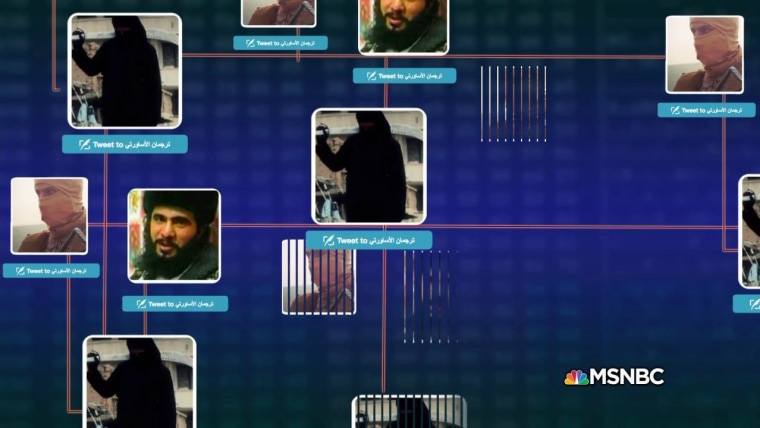By Farah Pandith

Recent years have revealed a scary, dangerous new era in which children have been taught to hate, are recruiting others and are plotting terrorist attacks.
The plot, while frightening, is not necessarily surprising for analysts of far-right terrorism. Many of the ideological themes, justifications and targets were familiar. But the case is still shocking: The plotter was just 13 when he began radicalizing and 16 when he was convicted, in November 2019, of planning six terrorist attacks. According to reports, at the time of his arrest he was the youngest person convicted of plotting a terrorist attack in the U.K.
This is not a one-off. Recent years have revealed a scary, dangerous new era in which children have been taught to hate, are recruiting others and are plotting terrorist attacks. While several schemes conceived by young far-right extremists were thwarted, the future may be bleaker. We have missed emerging trends in the past; counterterrorism professionals must urgently renew their vigilance — and implement new countermeasures — over the radicalization of young people in the West and beyond.
In October, police in Germany arrested a 14-year-old accused of plotting violence at a synagogue or a mosque. A 14-year-old was also arrested that month in San Diego on hate crimes charges after being accused of having punched a rabbi in the face. Kyle Rittenhouse, 17, is charged with killing two protesters in Kenosha, Wisconsin, in August.
There have even been cases of young people leading extremist organizations, such as the far-right British Hand, led by a 15-year-old. Authorities said a 17-year-old Midwesterner led the recruitment for a cell hoping to attack power lines should Donald Trump lose the 2020 election. Perhaps the most shocking case involves a leader of the Feuerkrieg Division who was caught in Estonia at just 13. According to The Guardian, "At least 17 children, some as young as 14, have been arrested on terrorism charges over the past 18 months."
The changing threat has been catalyzed by arguably the two most significant trends in terrorism over the past two decades: the emergence of people acting alone who have been inspired by the ideology of terrorists and the ease of online radicalization. Both trends encourage the increased involvement of young people in extremism: When radicalization occurs in the living room and not places of worship and when acts of terrorism no longer require complex planning, barriers to entry are lowered, allowing even teenagers to take active part.
It was the so-called Islamic State that revolutionized the latest wave of online radicalization, finding new and unique ways to appeal to young people the world over. Knowing there are around 1 billion Muslims under age 30, ISIS leveraged age-appropriate curated messages and platforms to entice youths from around the world.
Largely gone are the days when lengthy religious sermons radicalized the religiously zealous; today's recruits are inspired more by community and belonging than ideology. For years now, the "jihad cool" concept has been one of the movement's most powerful attractions, resulting in a unique appeal to younger audiences.
In one of the more notorious ISIS foreign fighter cases, three schoolgirls left their school in Bethnal Green, London, to travel to Syria to join the terrorist organization. Policymakers and the public were shocked — but should they have been? The navigation of identity and the search for belonging are at their most persistent during these formative years, and the same issue had already emerged in other contexts.
The ISIS case study also highlights why the dangers will only intensify. Gen Zers, the demographic born roughly between the mid-1990s and the early-2010s that makes up at least 32 percent of the world's population, are often described as digital natives because they never experienced life before the internet. Seeking and exploring one's identity may be common, but what appeals, and why, may not be. Observing the new changes on the terrorism landscape from far-right extremism to ISIS-inspired extremism can offer some signposts.
Gen Zers are always connected and are therefore always exposed to radically different viewpoints, including extremist ideology. Around 80 percent of Gen Z Arabs primarily get news through social media, and Gen Zers in the Asia-Pacific region spend over two hours a day on social media. Those trends will persist in Gen Alpha, which is heavily influenced by social media — one study indicated that over half of Gen Alpha respondents were more likely to purchase a product if their favorite influencer featured it on social media.
The post-pandemic landscape is particularly fraught. Teens around the world have spent unprecedented time online while grappling to understand and accept a transformative political, social and economic climate. TikTok has swept to prominence and been manipulated for extremist recruitment by both far-right extremists and ISIS.
The issue is particularly worrying in the American context. The country has already struggled through a school shooting plague for decades, so a model already exists for disaffected young people, and those youths will have far easier access to firearms than in other Western countries.
It is critical that Western counterterrorism efforts include strategies more focused on long-term preparedness and protection rather than just reaction. Pushing back against QAnon and other extremist networks in the wake of the storming of the U.S. Capitol was an ideal first step, but more is urgently needed to ensure that young people, particularly those suffering from vulnerabilities such as bullying, exclusion and mental health issues, are identified and get the help they need. Online, this includes drastically improving content moderation, engaging parents and teachers around counter-radicalization and promoting digital literacy skills.
Teens around the world have spent an unprecedented amount of time online while grappling to understand and accept a transformative political, social and economic climate.
We also need to redesign our counterterrorism strategy to account for child and adolescent development and gender differentiation, so we can design more sensitive and targeted countermeasures.
This might include the promotion of youth networks of positive influencers, which promote values of inclusion and shared humanity — regardless of race, religion and even just teen awkwardness. Such measures, when scaled, might allow teens looking to fill the need for identity and purpose to apply themselves in more positive ways — and allow us to prevent young people looking for belonging from finding it in online extremist forums.
In 2019 the Department of Homeland Security explicitly acknowledged "the need to support and protect our most vulnerable populations, our youth in particular." Despite these good intentions, though, its call has not been successfully implemented. Preventing teenage terrorism will require ensuring that all young people feel included, comfortable in their identity (or identities) and safe from nefarious actors online. Such an initiative should be central to any counterterrorism strategy implemented by the new administration. There is no time to waste.

No comments:
Post a Comment